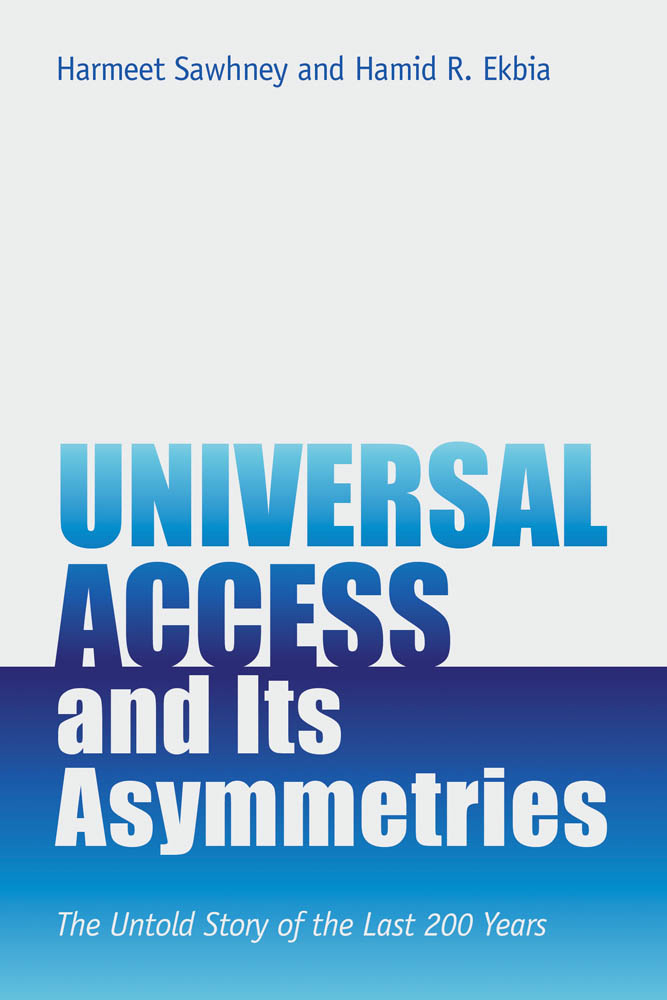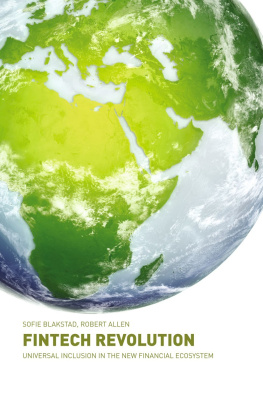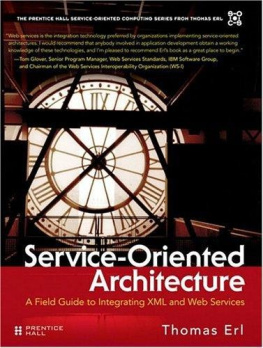Contents
List of Figures
List of Tables
Guide
Pagebreaks of the print version

Information Policy Series
Edited by Sandra Braman
The Information Policy Series publishes research on and analysis of significant problems in the field of information policy, including decisions and practices that enable or constrain information, communication, and culture irrespective of the legal siloes in which they have traditionally been located as well as state-law-society interactions. Defining information policy as all laws, regulations, and decision-making principles that affect any form of information creation, processing, flows, and use, the series includes attention to the formal decisions, decision-making processes, and entities of government; the formal and informal decisions, decision-making processes, and entities of private- and public-sector agents capable of constitutive effects on the nature of society; and the cultural habits and predispositions of governmentality that support and sustain government and governance. The parametric functions of information policy at the boundaries of social, informational, and technological systems are of global importance because they provide the context for all communications, interactions, and social processes.
A complete list of the books in the Information Policy series appears at the .
UNIVERSAL ACCESS AND ITS ASYMMETRIES

THE UNTOLD STORY OF THE LAST 200 YEARS
HARMEET SAWHNEY AND HAMID R. EKBIA
THE MIT PRESSCAMBRIDGE, MASSACHUSETTSLONDON, ENGLAND
2022 Massachusetts Institute of Technology
This work is subject to a Creative Commons CC-BY-ND-NC license. Subject to such license, all rights are reserved.

The MIT Press would like to thank the anonymous peer reviewers who provided comments on drafts of this book. The generous work of academic experts is essential for establishing the authority and quality of our publications. We acknowledge with gratitude the contributions of these otherwise uncredited readers.
Library of Congress Cataloging-in-Publication Data
Names: Sawhney, Harmeet Singh, 1960 author. | Ekbia, H. R. (Hamid Reza), 1955 author.
Title: Universal access and its asymmetries : the untold story of the last 200 years / Harmeet Sawhney and Hamid R. Ekbia.
Description: Cambridge, Massachusetts : The MIT Press, [2023] | Series: Information policy | Includes bibliographical references and index.
Identifiers: LCCN 2022006422 (print) | LCCN 2022006423 (ebook) | ISBN 9780262544559 (paperback) | ISBN 9780262372978 (epub) | ISBN 9780262372985 (pdf)
Subjects: LCSH: Digital divideUnited StatesHistory. | PoorInformation servicesGovernment policyUnited StatesHistory. | Community information servicesUnited StatesHistory. | Discrimination in municipal servicesUnited StatesHistory.
Classification: LCC HM851 .S239 2023 (print) | LCC HM851 (ebook) | DDC 303.48/33dc23/eng/20220425
LC record available at https://lccn.loc.gov/2022006422
LC ebook record available at https://lccn.loc.gov/2022006423
d_r0
To Mee-Young
Harmeet
To Mahin
Hamid
CONTENTS
LIST OF FIGURES
Gains and travails of the individual and the system.
A partial understanding of gains and travails.
A fuller understanding of gains and travails.
Recentering-on-reversal.
Maximum variation typology.
Utilities view of rural electrification: Appendage of urban system.
Proponents view of rural electrification: Complement to urban system.
Gains and travails, quadrants and tables.
LIST OF TABLES
Universal education: Gains and travails
Sample frame
RFD: Gains and travails
Universal education: Gains and travails
Rural electrification: Gains and travails
Universal service: Gains and travails
Public library: Gains and travails
Universal access: Gains and travails
Internet: Gains and travails
Individuals gains
Individuals travails
Systems gains
Systems travails
Blind spots and recentering-on-reversal
SERIES EDITOR INTRODUCTION
Sandra Braman
In the final work of his life, Edward Said wrote about late style, addressing the question of what it is that great artists do towards the end of their lives that is different from what they did before. That question is one that should be asked of scholars as well. Universal Access and Its Asymmetries: The Untold Story of the Last 200 Years is an unusual and highly original book by two strong and well-published senior scholars that takes up, perhaps without knowing it, Saids challenge by asking quite new questions about a subject on which much has already been written including, notably, by the first author. In doing so, Harmeet Sawhney and Hamid Ekbia offer multiple contributions. In addition to significantly expanding the dimensions through which we should think about universal access in any domain, they provide insights into the nature of infrastructure, offer new methods for policy analysis, and provide insights into major sociological transformations.
The book examines the histories of seven systems for which universal access has become a policy goal in the United States over the last two hundred yearsthe postal service, education, libraries, electricity, telephony, broadcasting, and the internet. The authors start from the simple but stunning observation that analysis of this issue up to now, with its familiar focus on difficulties for systems and advantages for individuals, leaves out half the story: there are also gains for systems and travails for individuals and communities when service is extended. Filling in these missing quadrants turns network analysis on its head, for it requires looking not only at relations generated by links, but also at what happens, often very intimately, within the nodes. Both through explicit comment and by model, Sawhney and Ekbia also provide a critique of what are best understood as research industries, the transformation of social issues into jobs and institutional programs that become self-perpetuating in their inertia, regardless of effective productivity or utility.
The authors are unusually well readat last, H. L. Mencken and Joan Didion come to information policy! Their use of historical materials from one and two centuries ago, whether news items, scholarly writing, or government documents, are valuable not only as support for their arguments, but also, often, as revelatory treats. Contemporary community-based voluntary efforts to build mesh networks to extend Internet access have predecessors in early-twentieth-century telephony, when farmers used barbwire fences for transmission and ran networks out of household kitchens. Todays concerns about what happens to local businesses when stores like Walmart show up in small communities replay what the realities were for stores in isolated, small towns when the postal service arrived, carrying catalogs from stores like Montgomery Ward and, literally, delivering the goods. Over and over again, efforts that it was believed would strengthen rural communities actually undermined them; electricity did, as was projected, make farm life easier, but because it also reduced the amount of labor needed, jobs were lost, causing young people to leave for urban opportunities.








